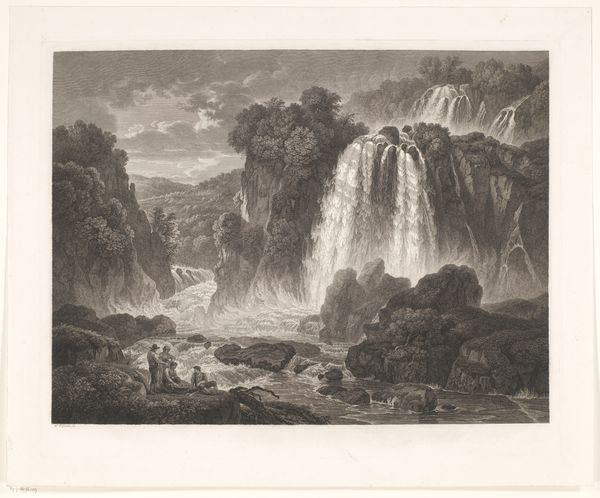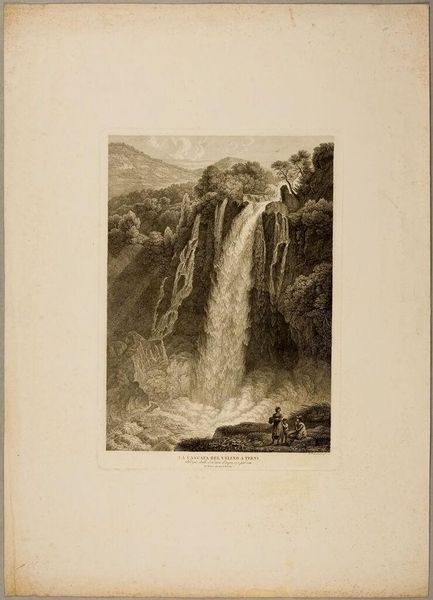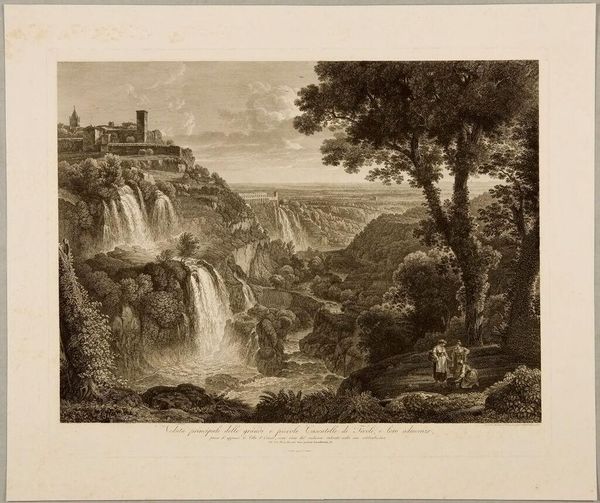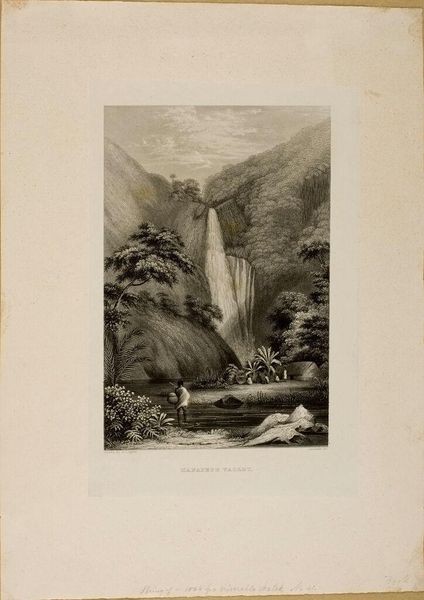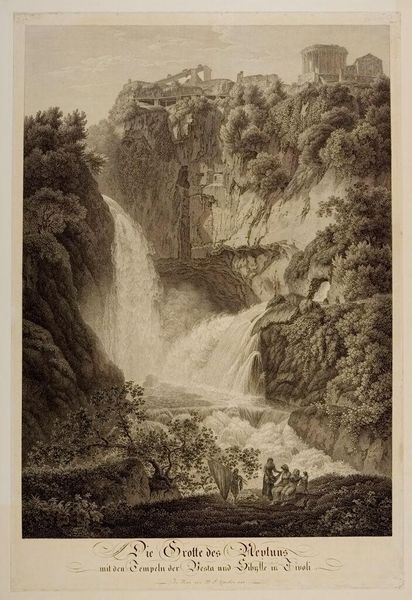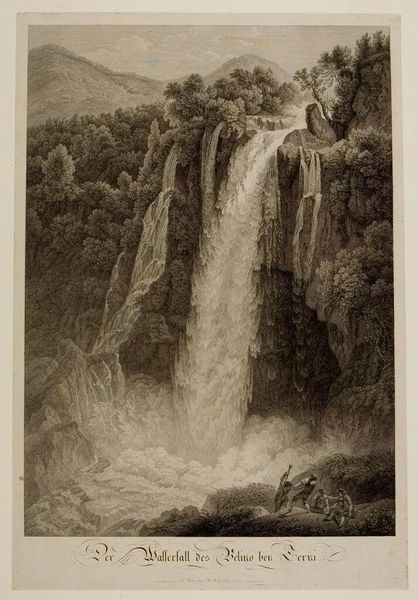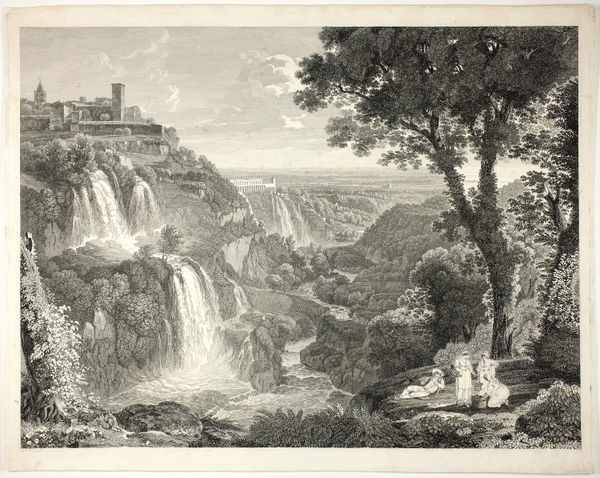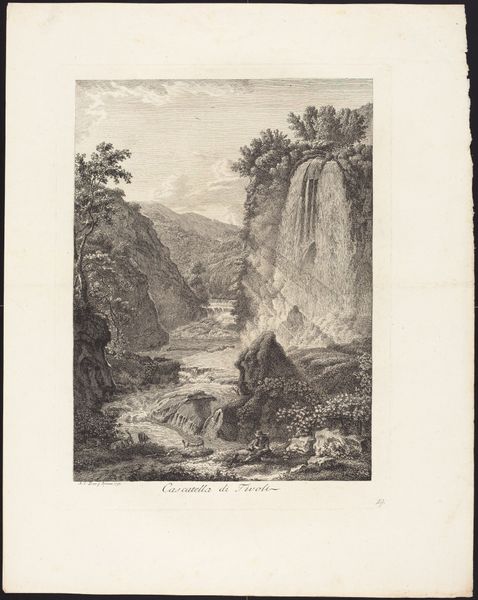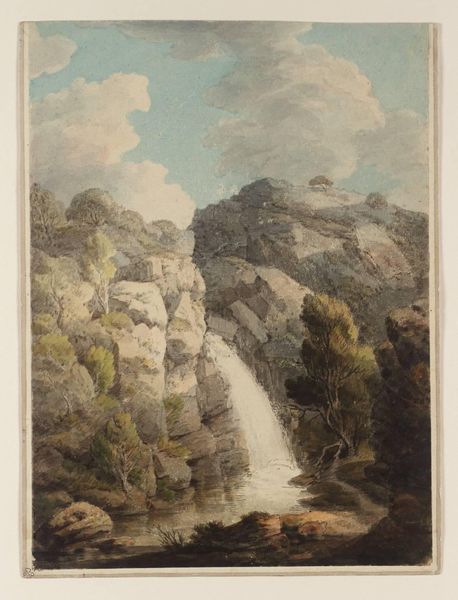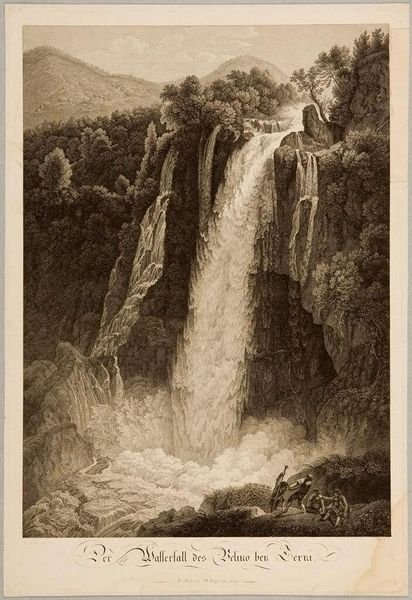
Copyright: CC0 1.0
Curator: Let's consider Friedrich Wilhelm Gmelin's "View of the Waterfall at Tivoli," housed at the Harvard Art Museums. It's an intriguing piece. Editor: Yes, and what immediately strikes me is its romantic, almost sublime quality—the power of nature rendered in monochromatic tones, but with a sense of human insignificance. Curator: Precisely! Gmelin masterfully uses light and shadow to create depth and texture, guiding the eye through the cascading water and the surrounding landscape. The composition itself is carefully structured. Editor: Though I wonder about the figures at the base. Do they represent an elite class, detached from the struggles of the working class who, perhaps, built the infrastructure that allowed such leisure? The falls become a backdrop for privilege. Curator: An interesting perspective. One could also argue the figures serve as a scale, accentuating the immensity of nature. The artist’s choice to depict the waterfall as the central focus suggests a reverence for natural forces. Editor: Perhaps. But art rarely exists in a vacuum. Considering the historical context is crucial. What were the prevailing social structures when Gmelin created this work? Curator: Ultimately, it is the delicate rendering that stays with me—the precision of the lines and the gradation of tones give the work a certain elegance and balance. Editor: True. It's a reminder that even in depictions of natural beauty, questions of power and representation are always present.
Comments
No comments
Be the first to comment and join the conversation on the ultimate creative platform.
